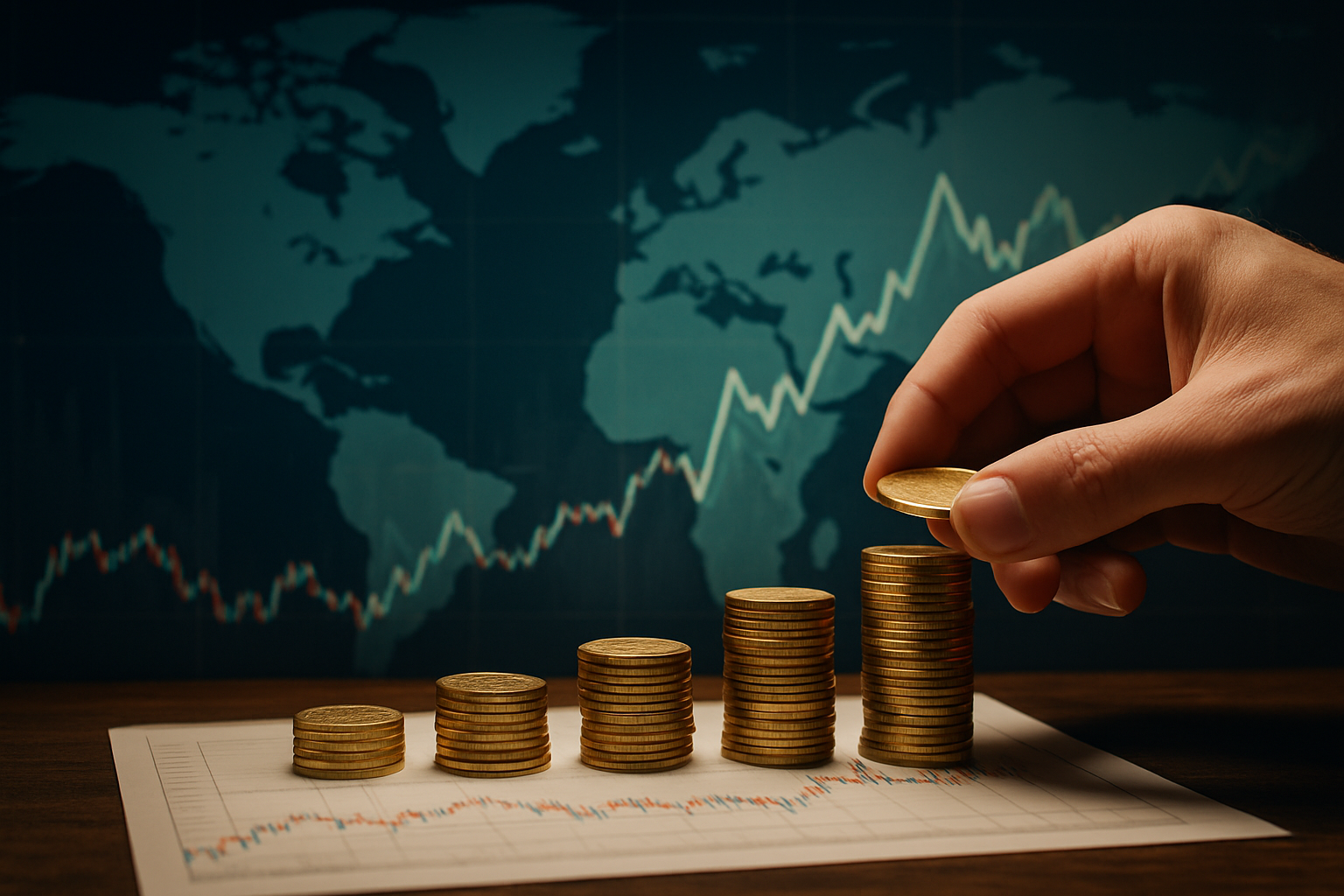Investment Perspectives on Material Valuations
Understanding the dynamics of metal prices is crucial for investors, industries, and economists worldwide. These valuations are not static; they fluctuate based on a complex interplay of global economic conditions, geopolitical events, technological advancements, and shifts in supply and demand. Analyzing these factors provides a comprehensive view of how material valuations impact various sectors and offers insights into potential investment opportunities and risks within the commodities market.

Understanding Global Commodities Markets and Metal Valuation
The global commodities market serves as a fundamental indicator of economic health and industrial activity. Metals, as a significant segment of this market, are valued based on their utility in manufacturing, construction, technology, and as stores of value. The valuation of commodities like metals is influenced by their inherent scarcity, extraction costs, and the economic policies of major producing and consuming nations. For investors, understanding these underlying factors is key to deciphering market signals and making informed decisions regarding resources and minerals.
Key Factors Influencing Metal Supply and Demand
Metal prices are primarily driven by the principles of supply and demand, which are constantly in flux. On the supply side, factors such as mining output, labor costs, energy prices, and the discovery of new deposits play a significant role. Geopolitical stability in mining regions and advancements in extraction technologies can also impact the availability of raw materials. Demand, conversely, is heavily influenced by global economic growth, infrastructure projects, consumer electronics production, and the manufacturing sectors that rely on industrial materials. Changes in these areas can lead to rapid shifts in market dynamics for various metals.
Industrial Materials and Economic Trends
Industrial metals like steel and copper are often considered bellwethers for the global economy due to their widespread use in construction, automotive, and electronics industries. Economic trends, such as periods of expansion or recession, directly correlate with the demand for these materials. For instance, increased urbanization and industrialization in emerging economies can spur demand, while economic slowdowns in developed nations might dampen it. The interconnectedness of global economies means that a downturn in one major industrial hub can have ripple effects on metal markets worldwide, influencing prices and investor sentiment.
Analyzing Futures Markets and Investment Trends in Metals
Futures markets provide a platform for investors to speculate on future metal prices and for producers and consumers to hedge against price volatility. These markets offer a forward-looking perspective on material valuations, reflecting collective expectations about supply, demand, and economic conditions. Traders analyze trends, technical indicators, and fundamental data to predict price movements. Understanding the structure and liquidity of futures markets is essential for anyone looking to engage with metals as an investment class, from individual investors to large institutional funds, providing insights into potential market shifts and opportunities for analysis.
Specific Metal Spot Prices: Steel and Copper
Steel, an alloy of iron and carbon, is indispensable in construction and manufacturing, making its price a direct reflection of industrial activity. Copper, known for its conductivity and ductility, is vital for electrical infrastructure and electronics. The spot prices for both steel and copper are highly sensitive to real-time market conditions, including production levels, inventory reports, and global trade policies. Monitoring these specific metals offers a granular view into the health of the industrial sector and broader economic movements.
Metal prices, as commodities, reflect complex global dynamics rather than fixed retail costs. Their valuations are influenced by geopolitical stability, technological advancements, and macro-economic policies. For example, the price of copper is often considered an indicator of economic health due to its extensive use in construction and electrical infrastructure, while steel prices are closely tied to manufacturing and building activity.
| Metal Type | Primary Use | Key Market Drivers | Typical Price Volatility |
|---|---|---|---|
| Copper | Electrical wiring, plumbing, construction | Global economic growth, infrastructure spending, EV production | Moderate to High |
| Steel | Construction, automotive, machinery, appliances | Industrial production, construction activity, raw material costs | Moderate |
| Aluminum | Aerospace, automotive, packaging, construction | Energy costs, global manufacturing output, trade policies | Moderate |
| Gold | Jewelry, investment, electronics | Geopolitical uncertainty, inflation expectations, central bank policies | Moderate |
| Silver | Industrial applications, jewelry, investment | Industrial demand, investment demand, gold price movements | High |
Prices, rates, or cost estimates mentioned in this article are based on the latest available information but may change over time. Independent research is advised before making financial decisions.
General Investment Considerations for Material Valuations
Investing in metals, whether directly or through derivatives, requires a thorough understanding of their unique market characteristics. Factors such as storage costs, geopolitical risks, currency fluctuations, and the impact of environmental regulations can all affect the profitability of metal-related investments. Diversification across different metals or through broader commodities funds can help mitigate some of these risks. Continuous monitoring of global economic indicators and industry-specific news is crucial for navigating the often-volatile landscape of material valuations and making informed decisions about resource allocation.
Understanding metal prices involves a multifaceted approach, considering global economic indicators, supply chain logistics, and the specific industrial applications of each material. From the foundational role of commodities in the global economy to the intricate movements within futures markets, a comprehensive perspective is essential. Investors and industry professionals alike must continuously analyze these factors to anticipate market shifts and adapt their strategies to the evolving landscape of material valuations, ensuring resilience and identifying opportunities in a dynamic market environment.





